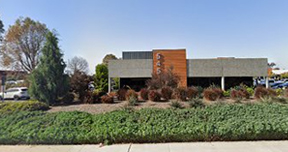
Injury Due to Faulty Airbags
Motor vehicles have a number of safety features intended to keep a driver and his or her passengers safe in the catastrophic event of an accident. One such safety feature is an airbag‚ which is a complex safety restraint system created to supplement seat belts that consists of crash sensors‚ airbag modules‚ and an electronic control unit. According to the National Highway Traffic Safety Administration (NHTSA)‚ frontal airbags saved 39‚976 lives from 1987 to 2012‚ and most airbags operate effectively‚ safely‚ and without causing harm to occupants in the vehicle. However‚ airbags can be unsafe‚ and even a small defect can cause serious personal injuries.
Causes of an Airbag Failure
An airbag can malfunction in a variety of ways. For example‚ it may deploy too late in a high speed crash‚ deploy unexpectedly when there is no crash‚ or deploy with too much force in a low speed crash. A number of things may cause an airbag to malfunction‚ but some of the more common defects known to cause failure include the following:
- Inaccurate ECU (electronic control unit);
- Overpowered inflators;
- Untethered airbags;
- Outdated technology; and
- Too few optimally located crash sensors.
Inadequate venting and improper airbag folding are two other defects which may also cause an airbag failure. An automobile manufacturer has the responsibility to adequately test a vehicle’s safety features and produce a fault-free safety system; however‚ when mistakes are made during production or appropriate safety testing isn’t performed‚ a driver or his or her passengers may suffer serious injuries as a result.
Takata Airbag Recall
Consumers were first made aware of the recall involving airbags made by the major parts supplier Takata in 2013. Since then‚ this situation has become a prime example of how airbags can go from being a safety feature to contributing to a hazardous situation when defective. After the initial recall that was thought to only affect six different car makes‚ the number of vehicle manufacturers that have had to issue recalls for the replacement of their frontal airbags has been increased to 14 over the last few years. This has amounted to approximately 70 million vehicles in the United States and 100 million worldwide being impacted by the Takata airbag recall‚ leading the National Highway Traffic Safety Administration to describe the safety recall as one of the largest and most complex in American history. The problem with the airbags was found to be in their inflator and propellant devices‚ which led to them deploying in an explosive manner and spraying metal shards throughout the vehicle’s interior.
As of July 2016‚ there were reported to be more than 100 injuries and 10 deaths in the U.S. In some of these cases where severe injury or a fatality occurred‚ the shrapnel had penetrated the victim’s face and/or neck. These airbag malfunctions have taken place on both the driver and passenger sides of the car‚ and oftentimes‚ the airbags have deployed in low impact crashes where everyone should have walked away with minor to no injuries.
Among those makes included in the airbag recall are Honda‚ BMW‚ Chevrolet‚ Chrysler‚ Dodge‚ Ford‚ Jeep‚ Nissan‚ Mitsubishi‚ Subaru‚ Toyota‚ and Volkswagen.
Common Injuries Caused By Faulty Airbags
Though designed to reduce the number of fatalities and life-threatening injuries caused by car accidents‚ a faulty airbag can be very dangerous and turn out to do more harm than good. When airbags fail to work properly‚ they become a danger to those in the vehicle. Their malfunction can lead to many different types of injuries that range in severity from minor to deadly. The most common injuries associated with defective airbag deployments include:
- Facial Lacerations and Skin Abrasions: Contact with an airbag can leave behind facial lacerations and skin abrasions that have the potential to scar.
- Broken Bones: Because of the strength that an airbag has when it deploys‚ broken bones are a routine occurrence. Fractures are typically encountered in the nose‚ arms‚ hands‚ fingers‚ and ribs.
- Hearing Damage: When airbags deploy‚ there is a loud explosion sound that occurs. Being in close proximity when that goes off can bring on temporary or permanent hearing loss.
- Eye Damage: Being hit in the face by an airbag with force can cause a rupture to the globe‚ corneal abrasion‚ retinal tear or detachment‚ conjunctivitis‚ and in some cases‚ blindness.
- Severe Head Trauma: Severe head trauma can be another outcome of being forcefully struck with an airbag‚ which can leave effects of a concussion‚ skull fracture‚ or traumatic brain injury.
- Spinal Cord Injury: The impact from a powerful airbag can lead to strain‚ fracture‚ or blunt trauma to the spinal cord. Serious spinal cord injuries can lead to paralysis‚ paraplegia‚ or quadriplegia.
- Damage to Internal Organs: Lacerations to the liver‚ spleen‚ heart‚ lungs‚ brain stem‚ veins‚ and arteries commonly occur when airbags blast into the body with violent force. Internal bleeding can also develop.
- Burn Injuries: Hot gas is used to inflate airbags‚ which can result in thermal burns if any contact is made with skin or chemical burns due to the gas being released into the air. These are usually first or second degree burns on the arms‚ hands‚ face‚ and chest.
Defective Airbag Cases – What Laws Apply?
In a motor vehicle accident case involving a defective airbag‚ strict liability law applies. This means that in order for a claimant to receive compensation from an insurance company or by a court award‚ they must prove that the airbag contained an “unreasonably dangerous” defect and that the defect caused harm. Auto manufacturers are responsible for ensuring that vehicle components‚ especially airbags‚ are properly designed‚ tested‚ and created to ensure consumer safety. If an auto manufacturer fails to uphold this duty and injury or death occurs as a result‚ they may be held legally responsible.
What Kind of Compensation Can I Receive?
In a San Diego defective airbag case‚ a claimant may be able to receive two types of compensation. The first type is compensatory damages‚ which are meant to reimburse a victim for harm done. This may include compensation for medical expenses‚ lost wages‚ or physical or psychological pain. A court may also award punitive damages‚ which are an additional amount of money intended to deter the defendant from any further wrongdoing or punish the severe wrongdoing of the defendant.
Legal Representation You Can Trust
Being involved in an auto accident is an extremely frightening experience‚ and is especially traumatic when injuries are caused by a mechanism that is supposed to keep you safe. The San Diego product defect lawyers with the Jurewitz Law Group Injury & Accident Lawyers are dedicated to protecting the rights of those harmed as a result of another party’s negligence and will ensure any at-fault parties are held responsible for the damage caused. For a complimentary case evaluation‚ call our offices at (619) 233-5020 or (888) 233-5020.


